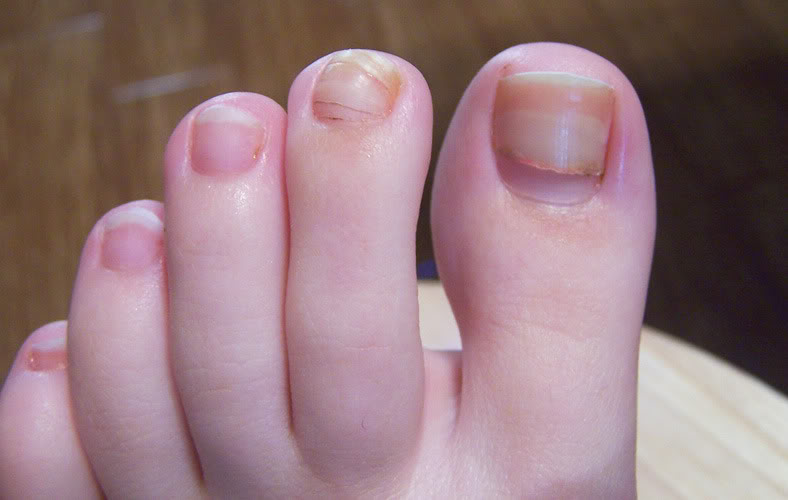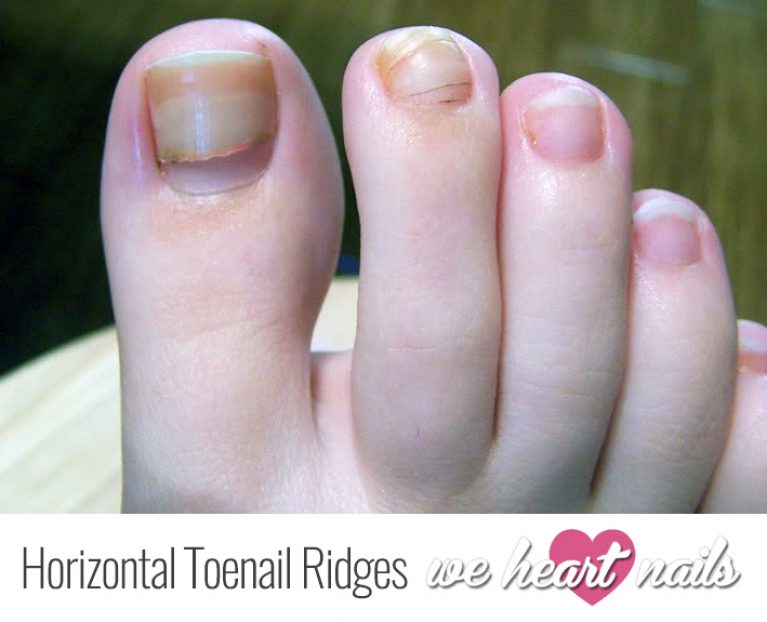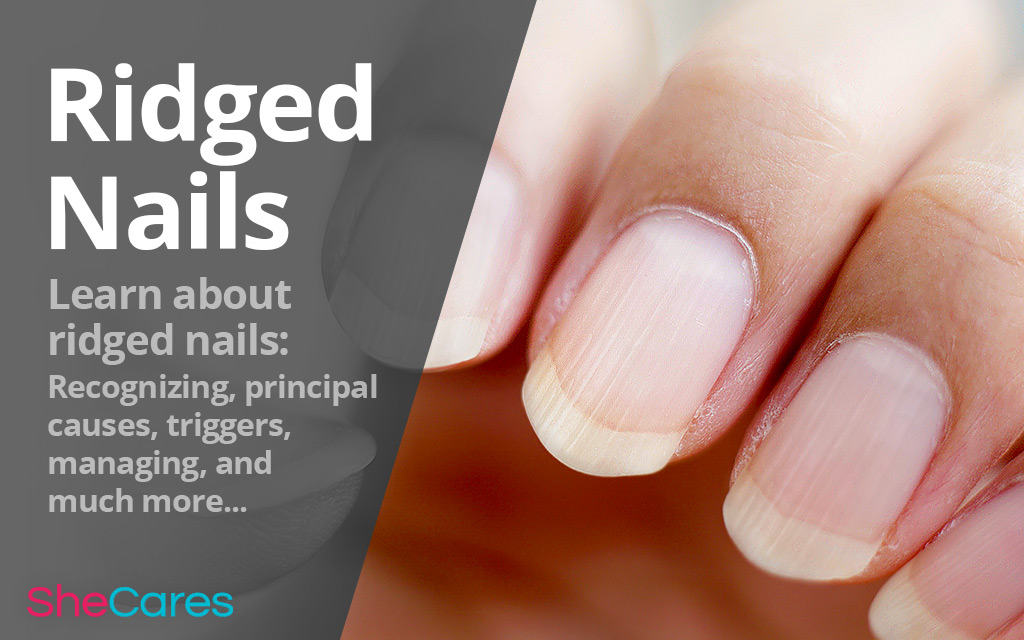Horizontal ridges on your nails can be a source of concern for many people. They may appear as raised lines running across the nails, and while they are often harmless, they can sometimes indicate underlying health issues. Understanding the causes and treatments of these ridges is essential for maintaining nail health and overall well-being.
Nail ridges, particularly horizontal ones, can occur due to a variety of factors, ranging from natural aging to more serious medical conditions. This article aims to provide a comprehensive guide to understanding the causes, symptoms, and treatments for horizontal ridges on your nails.
Whether you're dealing with minor cosmetic concerns or suspect a more significant health issue, this article will equip you with the necessary knowledge to address the problem effectively. Let's dive into the details and explore what these ridges might mean for your health.
Read also:Experience The Magic Usher Atlanta Tour 2024
Table of Contents
- What Are Horizontal Ridges on Your Nails?
- Common Causes of Horizontal Ridges
- Ailments Associated with Nail Ridges
- Diagnosis of Nail Conditions
- Treatment Options for Horizontal Ridges
- Prevention of Nail Ridges
- The Role of Nutrition in Nail Health
- Lifestyle Factors Affecting Nail Health
- When to See a Doctor
- Conclusion
What Are Horizontal Ridges on Your Nails?
Horizontal ridges on your nails, also known as Beau's lines, are distinct indentations or lines that run across the nail bed. These lines can appear on both fingernails and toenails and are often a result of disruptions in the nail growth process.
While vertical ridges are more common and usually harmless, horizontal ridges can sometimes signal an underlying health issue. They may indicate periods of illness, injury, or stress that affect the nail matrix, the area under the cuticle where new nail cells are produced.
Characteristics of Horizontal Ridges
Horizontal ridges can vary in appearance:
- Shallow or deep grooves: The depth of the ridges can depend on the severity of the condition causing them.
- Color variations: Some ridges may appear discolored, ranging from white to brown.
- Width: The width of the ridges can differ based on the duration and intensity of the underlying cause.
Common Causes of Horizontal Ridges
Several factors can contribute to the formation of horizontal ridges on your nails. Understanding these causes can help in identifying the appropriate treatment and management strategies.
Injury or Trauma
Physical trauma to the nail bed or surrounding areas can result in horizontal ridges. This can occur due to accidents, repetitive stress, or even poorly fitting shoes in the case of toenails.
Infections
Fungal or bacterial infections can disrupt nail growth, leading to the formation of ridges. Proper diagnosis and treatment of these infections are crucial for resolving the issue.
Read also:Eagles Quarterback Coach The Ultimate Guide To Their Impact On The Team
Ailments Associated with Nail Ridges
Horizontal ridges on your nails can be associated with various medical conditions, some of which are serious. It is important to recognize these associations to seek timely medical attention.
Malnutrition
A lack of essential nutrients, such as vitamins and minerals, can weaken the nail structure and lead to the development of ridges. Ensuring a balanced diet rich in vitamins B, C, and E, as well as zinc and iron, can help maintain healthy nails.
Autoimmune Disorders
Conditions like psoriasis and lupus can affect nail health, causing ridges and other abnormalities. Early diagnosis and management of these disorders are vital for preventing further complications.
Diagnosis of Nail Conditions
Accurate diagnosis is critical for addressing horizontal ridges effectively. Healthcare professionals use a combination of physical examination, patient history, and laboratory tests to determine the underlying cause.
Physical Examination
A thorough examination of the nails and surrounding areas can reveal important clues about the cause of the ridges. Dermatologists and other specialists may also assess the overall health of the skin and hair.
Lab Tests
Blood tests, nail biopsies, and other diagnostic procedures can help identify infections, nutritional deficiencies, or systemic diseases contributing to nail abnormalities.
Treatment Options for Horizontal Ridges
Treatment for horizontal ridges on your nails depends on the underlying cause. Addressing the root issue is essential for resolving the condition and preventing recurrence.
Medications
In cases of infection or autoimmune disorders, medications such as antibiotics, antifungals, or immunosuppressants may be prescribed. These treatments aim to eliminate the infection or manage the underlying disease.
Topical Treatments
Topical solutions, including moisturizers and nail strengtheners, can improve the appearance and health of the nails. These products help to smooth out ridges and enhance nail resilience.
Prevention of Nail Ridges
Preventing horizontal ridges involves adopting healthy habits and protecting the nails from potential damage.
Proper Nail Care
Regularly trimming and filing the nails can prevent ridges from becoming more pronounced. Avoiding harsh chemicals and wearing protective gloves during cleaning tasks can also safeguard nail health.
Hydration
Keeping the nails and cuticles well-hydrated is crucial for maintaining their strength and flexibility. Applying hand creams and cuticle oils can help achieve this.
The Role of Nutrition in Nail Health
Nutrition plays a pivotal role in nail health. Consuming a balanced diet rich in essential nutrients supports the growth and maintenance of strong, healthy nails.
Key Nutrients for Nails
- Vitamin B7 (Biotin): Promotes nail strength and reduces brittleness.
- Zinc: Aids in nail growth and repair.
- Iron: Prevents anemia, which can cause nail ridges.
Lifestyle Factors Affecting Nail Health
Various lifestyle factors can influence the health of your nails. Stress, smoking, and exposure to environmental pollutants can all contribute to nail abnormalities.
Stress Management
Managing stress through techniques such as meditation, exercise, and adequate sleep can have a positive impact on overall health, including nail health.
Environmental Protection
Protecting the nails from harsh environmental conditions, such as cold weather and excessive sun exposure, can prevent damage and the formation of ridges.
When to See a Doctor
While some horizontal ridges are harmless, others may indicate serious health issues. It is important to consult a healthcare professional if:
- The ridges are accompanied by pain, swelling, or discoloration.
- There is a sudden or significant change in nail appearance.
- You suspect an underlying medical condition.
Conclusion
Horizontal ridges on your nails can be a sign of various health conditions, ranging from minor cosmetic concerns to serious medical issues. By understanding the causes, symptoms, and treatment options, you can take proactive steps to maintain healthy nails and overall well-being.
We encourage you to share this article with others who may benefit from the information. If you have any questions or experiences to share, please leave a comment below. Additionally, explore other articles on our site for more insights into health and wellness topics.
Data Source: Mayo Clinic, National Center for Biotechnology Information



